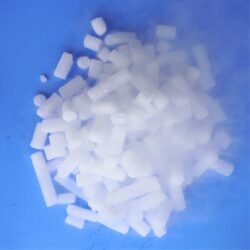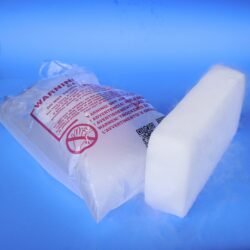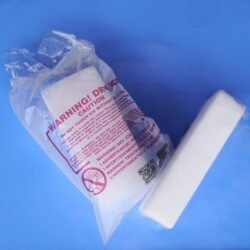Can Dry Ice Really Fix Car Dents?
One popular method that has circulated for years is the use of dry ice to repair car dents. Many car owners have heard of this technique, particularly for minor damages like hail dents. But is it truly effective, or is it just another dry ice dent repair myth? While the method can work in certain situations, it’s important to understand when and how to use it effectively.
Using dry ice for dents leverages the rapid temperature change that occurs when the extremely cold dry ice comes into contact with the surface of the car. This sudden cooling can cause the metal to contract, sometimes enough to “pop” the dent back into place. It’s most effective on smaller dents and those caused by hail damage, but may not work as well for larger or more severe dents.
In this guide, we’ll explore how to use dry ice to repair minor car dents, walk you through a step-by-step process, and clear up the dry ice dent repair myth by explaining when this technique is useful and when professional repair may be needed.
How Does Dry Ice Repair Car Dents?
The Science Behind Dry Ice and Dents
Dry ice is commonly used for its cooling properties, but when it comes to dry ice and car dents, it’s the rapid temperature change that works to your advantage. The process of cooling the metal surface quickly causes it to contract, and in some cases, the contraction is enough to pop the dent back into place.
Car dents are often the result of minor impacts that cause the metal to bend or warp. By applying dry ice, the metal contracts due to the extreme cold (-109.3°F or -78.5°C), and this sudden shrinkage can force the dent to revert to its original shape. This method works best on smaller dents, such as those caused by hail or light impacts.
While this technique is relatively simple, it’s important to note that it may not be effective on all types of dents. Larger or deeper dents, particularly those with sharp creases, may require professional repair rather than relying on popping dents with dry ice.
When Dry Ice Works Best
The effectiveness of dry ice in dent repair largely depends on the type of dent and the condition of the metal. Dry ice for dents is most effective when used on shallow, rounded dents where the metal can expand and contract without difficulty. It’s especially useful for fixing hail damage, where multiple small dents appear on the surface of the car. In these cases, the temperature change from dry ice can help restore the car’s original appearance.
However, for more severe dents, or if the paint is cracked or damaged, dry ice may not be enough to fully repair the issue. It’s always a good idea to evaluate the dent before proceeding and, if necessary, seek professional advice.
Step-by-Step Guide to Removing Dents with Dry Ice
Materials Needed for Dry Ice Dent Repair
Before you begin removing dents with dry ice, it’s important to gather the right materials to ensure safety and effectiveness. Here’s what you’ll need:
- Dry ice (small chunks or pellets work best)
- Dry ice gloves to protect your hands from the extreme cold
- A hairdryer (optional) for heating the surface before applying dry ice
- A soft cloth or rag to handle the dry ice
Once you have all the materials ready, you can begin the process of popping dents with dry ice. The use of a hairdryer is optional but can help enhance the temperature change if you’re dealing with particularly stubborn dents.
How to Use Dry Ice to Pop Out Dents
Here’s a step-by-step guide for using dry ice to pop out dents on your car:
- Clean the Area: Start by thoroughly cleaning the dented area with soap and water. Make sure there’s no dirt or debris that could interfere with the process.
- Heat the Dent (Optional): For stubborn dents, use a hairdryer to gently warm the dented area. This step is not always necessary, but it can enhance the effect of the dry ice by increasing the temperature difference.
- Apply the Dry Ice: Put on your dry ice gloves and hold the dry ice using a soft cloth or rag. Gently rub the dry ice over the dented area in a circular motion. The extreme cold will cause the metal to contract, and the dent may pop out as a result of the temperature change.
- Repeat if Necessary: If the dent doesn’t pop out immediately, repeat the process a few times. Some dents require multiple applications of dry ice before they return to their original shape.
- Inspect the Area: Once the dent pops out, inspect the area to ensure the metal has returned to its original position. You may need to buff the surface to smooth out any minor imperfections.
While dry ice and car dents may seem like an unlikely pairing, this method can be quite effective for smaller dents. If the dent persists after several attempts, it may be too deep or severe to be fixed with dry ice alone, and you should consider seeking professional repair.
Using Dry Ice for Hail Damage
Removing Hail Dents with Dry Ice
One of the most common applications of this technique is removing hail dents with dry ice. Hailstorms can cause small, rounded dents all over a car’s surface, and dry ice is an excellent option for fixing multiple dents at once. The process for repairing hail damage is the same as for regular dents — applying dry ice to the affected areas and using the temperature change to pop the dents back into place.
Since hail damage usually results in smaller, shallow dents, dry ice is highly effective in these situations. Simply work your way across the surface of the car, applying the dry ice to each dent until the hail damage is gone. You may need to repeat the process on each dent a few times to get the best results.
When Dry Ice Might Not Work
While dry ice is useful for minor dents, it’s not a miracle solution for all types of damage. Larger, deeper dents or dents with sharp creases may not respond to dry ice because the metal has been stretched or warped beyond what temperature change can repair. In these cases, professional dent repair services may be necessary.
Additionally, if the dent has damaged the car’s paint, applying dry ice won’t solve the issue. Instead, the area will need more extensive work to repair both the dent and the paint. Understanding the limitations of dry ice for dents will help you decide when to use it and when it’s time to consult a professional.
Dry Ice Dent Removal
Dry ice dent removal is a straightforward technique that allows car owners to address minor dents effectively. This method utilizes dry ice’s extreme cold to create a rapid temperature change that can help pop out shallow dents. Here’s a summary of the process:
- Preparation: Gather dry ice, protective gloves, a soft cloth, and optionally a hairdryer. Ensure the area around the dent is clean and free of debris.
- Heating (Optional): For particularly stubborn dents, use a hairdryer to warm the area slightly. This step helps enhance the effect of the dry ice.
- Application: Carefully apply the dry ice to the dented area using the cloth to protect your hands. Move in circular motions to evenly distribute the cold.
- Observation: Watch for the dent to pop out as the metal contracts. If necessary, repeat the application multiple times for better results.
- Finishing Touches: Once the dent is removed, inspect the area for any imperfections. Buff gently if needed to restore the surface.
This method is particularly effective for hail damage and small dents but may require patience and repeated attempts for best results. Always assess the damage before deciding to proceed with dry ice removal, as some dents may require professional intervention.
Common Myths About Dry Ice Dent Repair
Dry Ice Dent Repair Myth
There’s a lot of buzz around using dry ice for dents, but it’s important to separate fact from fiction. One common dry ice dent repair myth is that it works on any type of dent, regardless of size or depth. While dry ice can be effective for small, shallow dents, it’s not a universal fix for all car damage. Larger, deeper dents or those with sharp creases are less likely to respond to dry ice because the metal may have stretched or bent beyond what temperature change can repair.
Another myth is that applying dry ice to a dent will instantly pop it out. While it’s true that the temperature change can cause the metal to contract and remove the dent, the process often requires multiple applications and may not work immediately. Patience is key when using dry ice for dent repair, and it’s not a guaranteed solution for every dent.
By understanding the limitations and realities of using dry ice, you can avoid disappointment and know when to apply this technique effectively.
Safety Tips for Using Dry Ice for Dent Repair
Handling Dry Ice Safely
Whenever working with dry ice, safety should be your top priority. Dry ice is extremely cold at -109.3°F (-78.5°C) and can cause severe burns if it comes into direct contact with your skin. Always wear dry ice gloves when handling dry ice and use a cloth or rag to avoid direct contact with the metal surface. Prolonged exposure to dry ice can cause frostbite-like injuries, so never handle it with bare hands.
Ventilation and Precaution
In addition to wearing protective gloves, always use dry ice in a well-ventilated area. As dry ice sublimates, it turns into carbon dioxide gas, which can displace oxygen in confined spaces. When working in a garage or other indoor areas, be sure to open doors or windows to allow fresh air to circulate and prevent the buildup of CO2. These simple precautions will help ensure a safe and successful dent repair experience.
Conclusion
Using dry ice to repair small car dents is an effective and affordable solution for minor damage, especially from hail. By applying dry ice to the surface, you can take advantage of the rapid temperature change to pop out dents and restore the car’s appearance. However, it’s important to understand the limitations of this method, as it may not work for larger or more severe dents.
If you’re looking to try dry ice for dents, follow the steps outlined in this guide and make sure to handle the dry ice safely. Always wear dry ice gloves and work in a well-ventilated space to avoid injuries. For those needing high-quality dry ice for dent repair, Sub Zero Dry Ice offers a range of products, including dry ice blocks and dry ice gloves, to ensure you have everything you need for a safe and successful repair.




